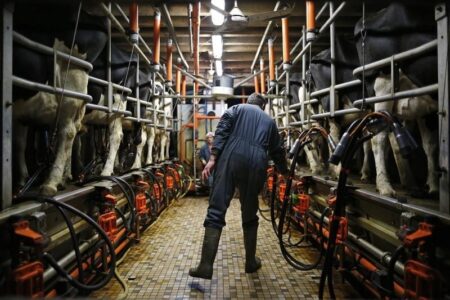By P.J. Huffstutter
CHICAGO (Reuters) – U.S. farm incomes are forecast to fall sharply for a second consecutive year, as direct government payments shrink, production costs surge and growing supplies of grains and oilseeds send crop prices plunging to multi-year lows, the U.S. Department of Agriculture reported on Wednesday.
Declining income could lead to a ripple effect across the rural economy in a presidential election year, as producers become more cautious about making large asset purchases such as new machinery or land.
Net farm income – which is a broad measure of profitability in the agricultural economy, according to the agency – is forecast to hit $116.1 billion in 2024 in nominal dollars, down 25.5% or nearly $40 billion from a year earlier.
This follows a nearly $30 billion drop in net farm income in 2023, down from a record high in 2022, according to the agency’s latest data.
When adjusted for inflation, net farm income in 2024 is forecast to fall by $43.1 billion, or 27.1%, compared with a year earlier.
As incomes fall, production expenses are rising, as are producers’ total farm debts. These are forecast to have jumped 5% between 2022 and 2023, and estimated to increase another 5.2% in 2024, according to USDA data.
Total expenses, including operator dwelling expenses, are seen 3.8% higher in 2024 over 2023. Livestock and poultry purchases, and labor expenses are expected to see the largest increases in 2024, compared to the previous period, USDA said.
U.S. Senator John Boozman (R-Ark.), ranking member of the U.S. Senate Committee on Agriculture, Nutrition, and Forestry, said the latest data highlight the need for bolstering support programs in the Farm Bill.
“Our current farm safety net is not equipped to handle the challenges our farmers are facing,” he said in a statement.
Direct government payments are forecast to fall by 15.9% in 2024, to $10.2 billion, largely due to lower supplemental program payments and ad hoc disaster assistance programs.
Read the full article here












